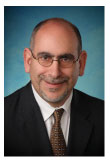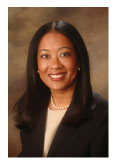By: Elise Kalfayan

Health care financing reform is a hot topic, with concern about this issue stretching from Washington, D.C. to Sacramento and into the homes and businesses of the San Fernando and San Gabriel valleys.
While the entire country debates how to pay for health care and struggles with hard economic times, medical center foundations continue to appeal directly to their communities for financial support. Interviewed recently for Business Life, heads of six local hospital foundations discussed their outreach plans and programs.
City of Hope
Kathleen Kane
Executive Vice President
Development & External Affairs
“Our many donors remain committed to support City of Hope,” says Kane. Peer-to-peer requests, direct mail, and events such as the Walk for Hope – dedicated to research into women’s cancers – are some of the ways the nationally-known organization reaches out to supporters. Industry-specific events like the annual Music and Entertainment Industry dinner are part of the focus on building long-term relationships with dedicated donors.
Kane says volunteers are a vital part of the care delivered to patients, and deliver excellent support services. “We have thousands of volunteers across the country dedicated to helping City of Hope save lives.”
The $1 billion “Power of Hope” campaign, launched in 2010 to raise private support or research and treatment in cancer, diabetes, and other life-threatening diseases will culminate in 2013, City of Hope’s 100th anniversary. A $20 million endowment was recently received to support diabetes research, building on City of Hope research which developed synthetic human insulin.
Grateful for several major gifts in recent years, Kane emphasizes that “we value every gift and are grateful to all of those who support our efforts to one day cure diseases.” She says that social media is a key component of City of Hope’s overall communications plan. “We are very active in this technology and continue to develop a robust fundraising presence.”
Glendale Adventist Medical Center
Dro Abrahamian
Healthcare Foundation President

“Our motto has been to make philanthropic giving Easy, Enjoyable and Everlasting,” says Abrahamian. His focus is on engaging more people with more opportunities. Golf, Gala, Oak Society and Guild events continue to grow with this approach, as the foundation has expanded outreach to patients and their families and friends.
Abrahamian stresses building “the momentum for sustainable giving” and relationships at supporters’ levels of comfort. The foundation’s five-year plan is to bring revenue to a sustainable $5 million level. Within ten years, it plans to complete a capital campaign for GAMC Centers of Excellence.
A Governing Board, Healthcare Foundation Board, and Civic Advisory Board oversee these efforts. Hospital volunteers can become members in the Oak Society, which raises money for the endowment. “We have had the pleasure of many people coming to us, asking what they can do for our patients, and we have made those connections,” says Abrahamian.
Fundraising is divided into Major Gifts, Guest Relations, Auxiliary Giving, Foundation and Government Grants, and Special Events. A recent $2.7 million estate bequest by the Aeola O’Harn Family went toward the Heart and Vascular Institute. A new auxiliary, The GAMC-Dr. Noris Bogosian Cancer Care Guild, just launched.
A system of constant communication with constituents includes cards with personalized messages, award-winning newsletter the Difference, and a presence on Facebook, Twitter, Yelp and other social media to build relationships.
Glendale Memorial Health Foundation
Lance Keene, Vice President

Keene was recently brought in to restart outreach. “We had most of our eggs in a golf tournament, a dinner, and grant writing, but we are now shifting from an events focus to a capital campaign.” He is encouraged by areas of strength.
“We have an outstanding volunteer program. Our volunteer director is very skilled at managing youth volunteers, and the kids that go through our program are very responsible. Our senior volunteer program has been here for decades and is also excellent.”
Keene appreciates legacy leaders. “We have families where parents have stepped off the board but children have stepped on, raising money and learning the art of philanthropy and the hope it entails.”
“We get pretty good coverage of our golf tournament and Wine & Roses events, although they don’t raise large amounts.” As these are opportunities to cultivate and recognize major donors, they have a place in expanding outreach plans. Recent large estate gifts came in unrestricted, and were used for a new Cystotamy Table for urologic imaging.
The foundation publishes a quarterly newsletter, is on Facebook, and is now installing online giving technology. Keene is also working on the fall launch of a direct mail series.
Refurbishing the ER and the lobby to improve first impressions are priorities of the developing 3-phase capital campaign. Higher phases will focus on private rooms, technology, the Heart Center, and floors and structures.
Verdugo Hills Hospital Foundation
Yulanda Davis-Quarrie, CFRE, President

Direct mail, special events, personal solicitations, newsletters, and annual reports are all active components of Verdugo Hills’ outreach. A volunteer board works alongside professional staff to raise funds and promote donations and deferred gifts such as will bequests. “Support comes from a variety of sources – individuals, corporations, foundations, and via special events such as our golf tournament,” says Davis-Quarrie.
A volunteer committee runs the annual golf tournament, which raised over $140,000 this year. “We also have a Women’s Council, which hosts fundraisers such as a bingo event, fashion show, and this year the new Poinsettia Ball, a big black tie gala which will be launched December 3rd.”
In addition to leadership, there are about 300 in-service volunteers who perform tasks from manning the front desk, to making deliveries to patients, to assisting non-clinical departments.
“Our short-term goal is to develop a more comprehensive major giving program that identifies, cultivates, solicits and stewards major gift donors. These will eventually be part of a capital campaign that we hope to embark upon within a year,” says Davis-Quarrie. The foundation will be sending out a will bequest program mailing to all its donors soon. The larges recent gift to the hospital, of $100,000, was applied equally to the foundation endowment and the general fund.
Davis-Quarrie says the hospital is now exploring social media networking as part of the overall hospital marketing program and online giving program. The foundation already produces a newsletter that goes out three times a year to about 56,000 individuals.
Providence Health & Services Foundation, Valley Service Area
(includes Providence St. Joseph Medical Center, Burbank)
Patricia Modrzejewski, President

“We reach out to our supporters through individualized stewardship plans,” says Modrzejewski. These include letters, tours with physicians, lunches with board members and the chief executive officer, and invitations to giving circle events.
She notes that the common denominator among very generous donors is their long-standing relationships with the medical center, most often as volunteers.
Each Providence medical center has a Board of Governors directly responsible for fundraising; a Board of Directors oversees all three foundations.
The Providence St. Joseph Medical Center board raised $40 million for the opening of the Roy and Patricia Disney Family Cancer Center in 2010. In 2011, they completed an $11 million effort to open the Hycy and Howard Hill Neuroscience Institute, and are currently raising $9 million to establish the Cusumano Family Neuroscience Outpatient Clinic. These were all launched by large gifts – from $10 million from the Roy and Patricia Disney Family to $1 million from the Cusumano Family.
Short- and long-term fundraising strategies center around stewarding current donors, creating emotional experiences, and increasing personal ties. Providence also reaches out to grateful patients and works to share the stories of its institution with others.
In addition to print outreach, Providence has developed 3 monthly eNewsletters with an average open rate of 25 percent, and posts on Facebook, Twitter, LinkedIn, YouTube, Flickr, and its own blog.
Northridge Hospital Foundation
Brian Hammel, President

“The specific purpose of this Foundation is to support the mission and the charitable purposes and activities of Northridge Hospital Medical Center,” says Hammel. “By collaborating with our community, the Foundation raises funds to help build and maintain hospital programs, purchase new equipment and technology, and also provides the financial support to upgrade and/or build new structures.
The foundation reaches out to supporters through direct mail, planned giving newsletters, its website, and Constant Contact. It focuses efforts on programs such as its “Campaign for Cancer Care.”
Northridge has 422 hospital volunteers, and 29 members of the Foundation Board of Directors. The board plans major fundraising programs such as the Harold Pump Foundation Celebrity Golf Tournament and Dinner held in August of each year, drawing about 300 golfers and 1,100 supporters to the dinner. It also hosts the Gold Hour Guild Spring Brunch (220 attendees), a Steppin’ Out Black Tie Gala (575 attendees), and a Victory for Victims Walk/Run drawing about 2,000 participants yearly.
Its largest recent donation was $2,280,000 in the form of a Charitable Remainder Unitrust. Retaining current donors and reaching out to patients via letters upon discharge are both important elements of the fundraising program.
“Improving the quality of life in the communities we serve is always the short and long term goal of the Foundation,” concludes Hammel.

|